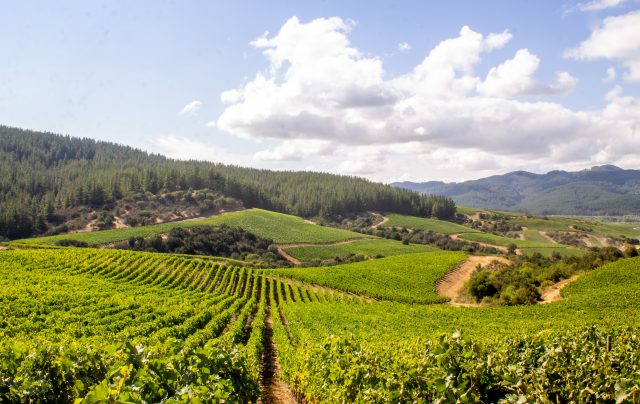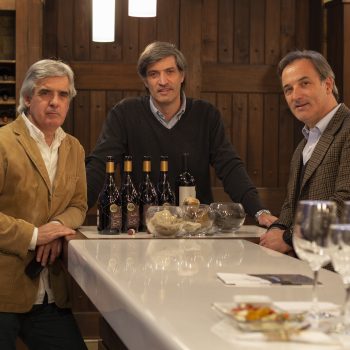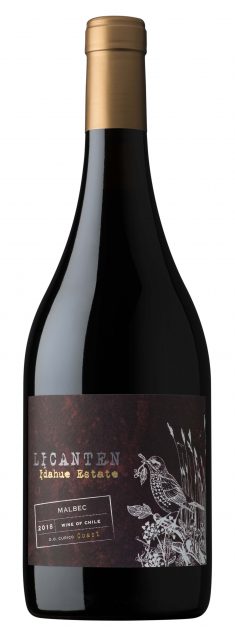This website uses cookies so that we can provide you with the best user experience possible. Cookie information is stored in your browser and performs functions such as recognising you when you return to our website and helping our team to understand which sections of the website you find most interesting and useful.
Viña La Ronciere: We want to be “pioneers” of a new Chilean wine style
Chilean wine producer Viña La Ronciere says it wants to “pioneer” of a new style of Chilean wine as it puts one of Chile’s youngest DO’s on the map.

Speaking to db, Viña La Ronciere’s export director María Pia Merani said the potential of the new region could be “huge” for Chile. The producer embarked on the project ten years ago with the aim to evolve from a producing volume sales of wines from Colchagua and Cachapaol to focus on quality, terroir-driven wines from the previously unknown Licantén region, a district within the Curicó Valley next to the Mataquito River, which is 25km from the coast.
“I hope other wineries will have the vision to do something different as Chile is a small country and the international competition is tough, and you must be able to offer something off the route – not just changing the label or barrel but changing the concept.”
She argues that there are only four ways for a producer to succeed in the compeitive international market.
“You either have to be the first to export or have the biggest marketing budget – well, the first happened fifty years ago, and we can’t pour money into this, we’re a small family winery. Another option is to be the cheapest, but we don’t want to be! What happens then is that the only one who gets the profits are the retailers. Finally there is the option to be innovative,” she explains.
“We didn’t want to be one of the 300 producers selling the same prices, with the same quality as always,” she explains, adding that the company, led by brothers José Antonio, Andres and Alejandro Orueta, concluded that it needed to do “something radical” in working on the quality.

“So when we found this place, (Licantén) in 2012, we knew we had that potential as we could produce grapes in a place that no one else was.”
Global warming
Another important factor in the mix is global warming, which she says is already affecting the Central Valley in Chile – and this is making the coastal areas more attractive.
“It used to be a few days of very high temperatures, now it’s a week or more,” she explains. “We wanted to produce high quality wine and fresh quality wine, so the central valley not an option, that’s why we went to check the high Andes and the coastal areas.”
The project in Licaten has been “huge” and hard work.
“It’s not about buying 5 hectares and seeing what we get – it’s a place of 200 hectares where 130 was planted and divided into small lots for the vineyards,” she explains. “We had to till for 1m deep every 1m distance over 130 hectares of slopes”.
While working, the team found a diversity of soil types they had had not anticipated, including lucitas, licarellas, and granites, which she says gave fantastic quality to the grapes.
“We are convinced that the quality and style of the wine is 70% in the land, and quality of the fruit,” she says. “If you don’t have the terroir it doesn’t matter how good the winemaker is, doesn’t matter how good the facilities or the technology you have, the type of barrels ceramics you use or whatever you can do with the wine process, if you don’t have the quality and structure in the grapes, you don’t have a good wine.”
The proximity of the ocean helps as much as the terroir.

“Every day, between noon and 3pm there is a breeze from the ocean, regardless of the weather. What this wind does with the skin of the grapes is to make it thicker, stronger, more concentrated and drier so all potential diseases associated with humidity and fog [are blown away]. It gets dry naturally, so you have very healthy fruit so when you have quality in the fruit, it’s very difficult not to have quality in the wine.”
She admits that the team had to learn how to handle “this super powered quality”, which needed different handling to the wines they had made in Colchagua and Cachapoal.
“We’re not working from volume point of view. We know that we have to work and it will take years to have consolidation. We know that moving from entry level to to quality will take time and we’re ok with that. So we’re taking all the opportunities we can,” she says.
A big year
2020 was set to be a key year for the company, the year it presented the whole Licantén range to the international market
“But then came Covid,” Merani shrugs. “So we’re waiting our time – maybe this year will be the year that we can show to more people the wines!”
However, despite the plans being put largely on hold as exhibitions such as ProWein was cancelled, the wine has none-the-less started to garner recognition – eleven of its wines scored 92-96 points, and the Malbec was chosen as the best wine from Chile by Tim Aitkin, and it has won a listing in the UK with Corney & Barrow.
“We have the most important thing here – a project, credibility and quality at a very affordable price,” Merani says. “This is an important thing as we put them at an affordable prices as we want people to try them and fall in love with what we’re doing!”
Hopefully, Chile will be “recognised with a new style of wine – young, fresh”, she argues. “The coastal wines from Chile will be recognised everywhere and we want to be one of the pioneers who decided to make a change on the offer of Chilean Wines.”

